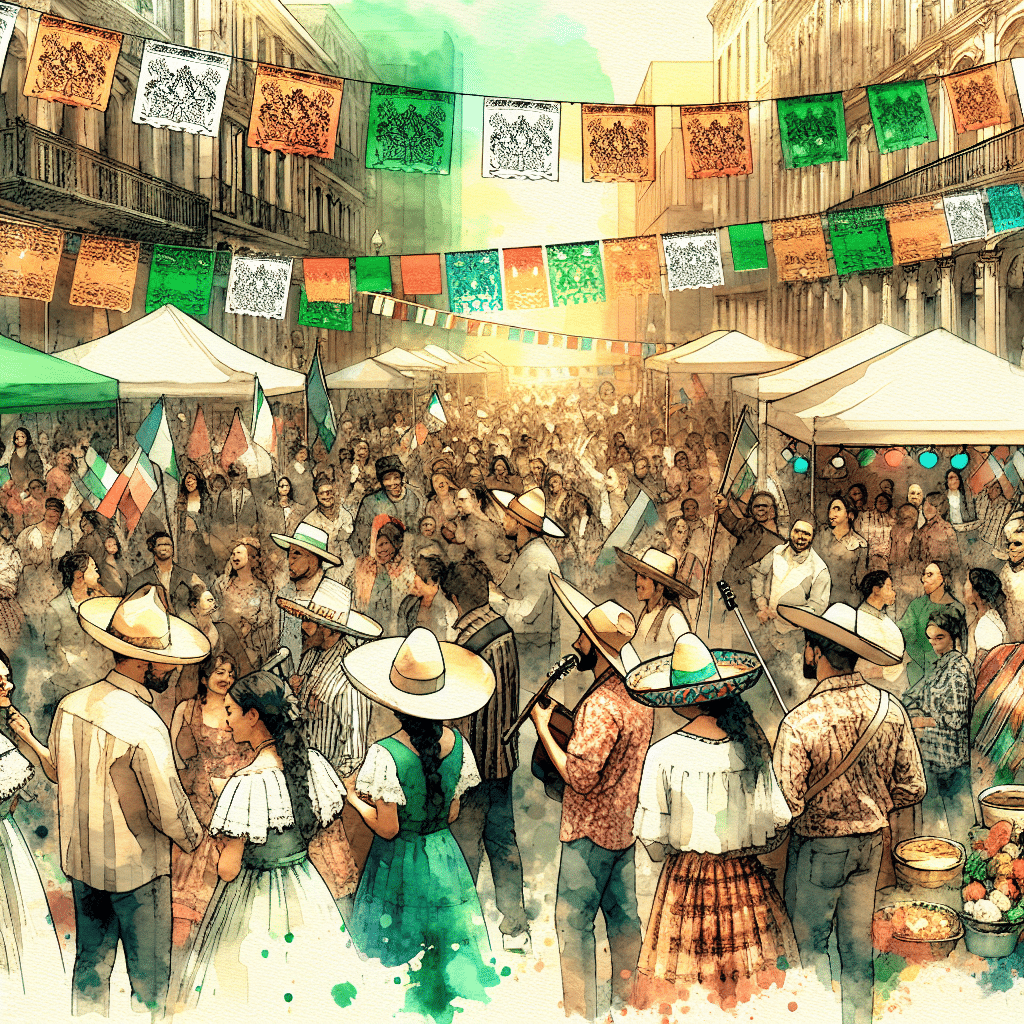
Viva la Cultura! Unforgettable Hispanic Heritage Month Celebrations
Celebrating Hispanic Heritage Month
Origin and Significance
Hispanic Heritage Month in the U.S. runs from September 15th to October 15th. This period marks the independence anniversaries of five Latin American countries: Costa Rica, El Salvador, Guatemala, Honduras, and Nicaragua. Mexico, Chile, and Belize also celebrate their independence during this time (Smithsonian Learning Lab).
It all started as a week-long celebration in June 1968, thanks to California Congressman George E. Brown. He wanted to spotlight the contributions of Hispanic Americans. Congress made it official on September 17, 1968, with Public Law 90-48, kicking off National Hispanic Heritage Week on September 15 and 16 (History.com). President Reagan later stretched it to a full month in 1988 (National Museum of the American Latino).
Key Dates and Countries
The dates for Hispanic Heritage Month are tied to the independence days of several Latin American countries. Here’s a quick rundown:
| Date | Country | Event |
|---|---|---|
| September 15 | Costa Rica | Independence from Spain in 1821 |
| September 15 | El Salvador | Independence from Spain in 1821 |
| September 15 | Guatemala | Independence from Spain in 1821 |
| September 15 | Honduras | Independence from Spain in 1821 |
| September 15 | Nicaragua | Independence from Spain in 1821 |
| September 16 | Mexico | Independence from Spain in 1810 |
| September 18 | Chile | Independence from Spain in 1810 |
| September 21 | Belize | Independence from the UK in 1981 |
This month isn’t just about independence; it’s a celebration of the rich and diverse Hispanic cultures that make up over 20 Spanish-speaking countries (LinkedIn).
Want to learn more? Check out our articles on Hispanic Heritage Month history and Latino Heritage Month culture. Dive into the colorful world of Hispanic Heritage Month activities and see how these cultures shape American society.
Hispanic Heritage Month Evolution
From Week to Month
Hispanic Heritage Month wasn’t always the month-long fiesta it is today. It actually started as a humble week-long celebration. Back in 1968, under President Lyndon B. Johnson, Hispanic Heritage Week was born (National Museum of the American Latino). The idea was to recognize the contributions and influence of Hispanic Americans to the history, culture, and achievements of the United States.
Fast forward 20 years, and along comes President Ronald Reagan, who decided a week was just not enough to party. In 1988, he signed into law the expansion of Hispanic Heritage Week to a full 31-day period, thus creating the National Hispanic Heritage Month that runs from September 15 to October 15. This allowed for more extensive celebrations that could better encompass the rich and diverse cultures within the Hispanic community.
Here’s a quick snapshot of the evolution:
| Year | Event |
|---|---|
| 1968 | Hispanic Heritage Week established by President Lyndon B. Johnson |
| 1988 | Extended to a month-long celebration by President Ronald Reagan |
| 1989 | Officially proclaimed as National Hispanic Heritage Month by President George H.W. Bush |
Presidential Recognition
Presidential recognition has played a pivotal role in elevating Hispanic Heritage Month to its current status. After President Reagan’s expansion of the celebration in 1988, it was President George H.W. Bush who officially declared the period from September 15 to October 15 as National Hispanic Heritage Month on September 14, 1989 (History.com).
This isn’t just a ceremonial title; the declaration by President Bush brought a level of national attention and legitimacy that opened the door for even more widespread celebrations and recognitions. Since then, every sitting U.S. President has issued a proclamation to mark the commencement of Hispanic Heritage Month, underscoring its importance and encouraging the public to observe it with appropriate ceremonies and activities.
For more juicy tidbits on the history and evolution of this festive month, check out our hispanic heritage month history page.
So, there you have it. From a modest week-long observance to a full-blown month of celebration, Hispanic Heritage Month has evolved significantly, thanks to the efforts and recognition from various U.S. Presidents. For those looking to dive deeper into the festivities, visit our pages on hispanic heritage month activities and hispanic heritage month events near me.
Celebrating Latino Culture
Diversity and Strength
Latino culture is a colorful mix of traditions, languages, and histories from Latin America and Spain. This blend creates a unique cultural identity that’s celebrated during Hispanic Heritage Month. Think of the lively beats of salsa and reggaeton, or the mouth-watering flavors of tacos and empanadas—Latino culture is a sensory delight.
The Latino community’s strength shines through their ability to thrive despite obstacles. Icons like Cesar Chavez and Supreme Court Justice Sonia Sotomayor show this resilience. Chavez fought for farmworkers’ rights, while Sotomayor became the first Latina Supreme Court Justice. Their stories inspire new generations to embrace their heritage and aim high.
Latino history is full of trailblazers in civil rights, space exploration, fashion, literature, and the arts. For more on these amazing figures, visit the National Museum of the American Latino.
Impact on American Society
Latinos have left their mark on American society in countless ways, from science and engineering to arts and humanities. Dr. Ellen Ochoa, the first Latina astronaut, paved the way in space exploration. Lin-Manuel Miranda shook up Broadway with “Hamilton,” blending hip-hop with history.
| Field | Notable Figures |
|---|---|
| Civil Rights | Cesar Chavez, Dolores Huerta |
| Space Exploration | Dr. Ellen Ochoa |
| Judiciary | Sonia Sotomayor |
| Arts and Entertainment | Lin-Manuel Miranda, Oscar de la Renta |
| Literature | Sandra Cisneros |
Despite these contributions, Latinos are still underrepresented in media, government, and corporate roles. This gap shows the need for more visibility and inclusion. Recognizing and celebrating these contributions is key to a more inclusive society. Learn more about the importance of representation.
The growing Hispanic population in the U.S. is shaping American culture in exciting ways. From food to fashion, Latino influences are everywhere. Hispanic Heritage Month is a chance to celebrate these contributions. For more on how Latinos are shaping American culture, check out our articles on latino heritage month culture and latino heritage month traditions.
Pop culture celebrations during Hispanic Heritage Month showcase the richness of Latino culture. Whether through music, dance, or literature, these events highlight a dual cultural identity that balances Latino heritage with American life. For more on the festivities, visit hispanic heritage month celebrations.
Why Representation Matters
Shaping American Culture
Hispanic heritage has left a lasting mark on American culture, from the delicious flavors of tacos and empanadas to the infectious beats of salsa and reggaeton. Imagine savoring a spicy taco or dancing to the rhythm of Latin jazz. Hispanic folks have been game-changers in fields like science, engineering, and the arts, making America what it is today.
| Field | Notable Contributions |
|---|---|
| Food | Tacos, Empanadas, Ceviche |
| Music | Salsa, Reggaeton, Latin Jazz |
| Science | Innovations in Engineering, Medicine |
| Arts | Influential Artists, Writers, Performers |
Hispanic Heritage Month is a big deal, celebrating these contributions and showing how Hispanic culture is woven into the fabric of America. It’s not just about looking back; it’s about inspiring future generations to take pride in their roots.
Challenges and Opportunities
Despite all the good stuff, Hispanic people still face hurdles like discrimination, poverty, and limited access to education and healthcare. These issues make it super important to raise awareness and take action.
Representation is a big part of the solution. Hispanic folks are often missing in media, government, and corporate roles. We need more Hispanic actors, politicians, and CEOs to create a more inclusive society.
| Area | Representation Needed |
|---|---|
| Media | More Hispanic Actors, Directors |
| Government | Hispanic Politicians, Policymakers |
| Corporate | Hispanic CEOs, Executives |
With the Hispanic population growing fast in the U.S., it’s crucial to focus on inclusivity and equity. By tackling these challenges and seizing opportunities, the Hispanic community can keep shaping American culture in awesome ways.
Every president since 1989 has made national proclamations during National Hispanic Heritage Month, recognizing the huge contributions of Hispanic Americans and stressing the need for a more inclusive society.
For more on how Hispanic heritage is celebrated and its impact on American culture, check out our articles on Hispanic Heritage Month activities and Hispanic Heritage Month facts.
Cultural Celebrations
From vibrant parades to mouth-watering dishes, Hispanic Heritage Month is a lively celebration of rich traditions and cultural pride.
Festivities and Traditions
Hispanic Heritage Month, running from September 15th to October 15th, is packed with events that honor the history and contributions of Hispanic cultures. These celebrations often feature parades, traditional music and dance, and community gatherings that bring everyone together (Smithsonian Latino Center).
Joining these celebrations is a fantastic way to dive into the diversity of Latino heritage. Popular events include:
- Parades: Think colorful floats, traditional costumes, and live music. Check out Hispanic Heritage Month parades for events near you.
- Dance Performances: From salsa to flamenco, the rhythmic beats and energetic moves are a sight to behold. Learn more about Latino heritage month dance.
- Art Exhibits: Showcasing the creativity and talent of Hispanic artists. Explore Hispanic heritage month exhibits.
Food, Dress, and Community
Food is the heart and soul of Hispanic Heritage Month, reflecting years of tradition and cultural expression. The diverse array of Hispanic dishes serves as a common language that brings people together. Some popular dishes include:
| Dish | Origin | Description |
|---|---|---|
| Tacos | Mexico | Soft or hard tortillas filled with a variety of meats, beans, and toppings. |
| Arepas | Venezuela/Colombia | Cornmeal cakes filled with cheese, meats, or avocado. |
| Empanadas | Argentina | Pastry pockets stuffed with savory or sweet fillings. |
For more culinary inspiration, visit our Hispanic heritage month food section.
Traditional dress is another highlight, with women often wearing colorful embroidered skirts and men donning traditional pants and embroidered shirts. These outfits are not only beautiful but also serve as a symbol of cultural identity and pride.
Community is at the heart of Hispanic Heritage Month. These events provide a chance for people to come together, share their heritage, and celebrate their collective history. Whether it’s through dance, art, or food, the sense of community is palpable and adds to the richness of the celebrations. For a deeper dive into the cultural aspects, check out our page on Latino heritage month culture.
By joining these cultural celebrations, you can gain a deeper appreciation for the traditions and contributions of the Hispanic community. So, put on your most colorful attire, savor the delicious flavors, and join in the festivities to make this Hispanic Heritage Month an unforgettable experience.
Promoting Mental Health
Mental health is a big part of feeling good overall, and it’s especially important to talk about it during Hispanic Heritage Month. Let’s chat about how speaking two languages and having culturally aware support can boost mental health in the Hispanic community.
Bilingualism’s Superpowers
Being able to speak two languages isn’t just cool—it’s a mental health game-changer for many in the Hispanic community. Here’s why:
- Brain Boost: Juggling two languages can make your brain sharper and improve multitasking.
- Emotional Control: Switching languages can help manage emotions and stress.
- Better Conversations: Easier chats with mental health pros can lead to better care.
Check out this quick rundown of how bilingualism helps mental health:
| Benefit | Impact |
|---|---|
| Brain Boost | Sharper thinking |
| Emotional Control | Better stress management |
| Better Conversations | Improved care |
Want to know more about the brain perks of being bilingual? Take a look at our article on Hispanic Heritage Month facts.
Culturally Aware Support
Helping the Hispanic community with mental health means focusing on cultural understanding, easy access, and breaking down stigma (Galen Hope). Here’s what that looks like:
- Safe Spaces: Creating places where people feel comfy talking about mental health.
- Culturally Sensitive Services: Offering help that respects and understands cultural backgrounds.
- Awareness: Spreading the word to reduce stigma and encourage getting help.
| Initiative | Description |
|---|---|
| Safe Spaces | Comfy places for mental health talks |
| Culturally Sensitive Services | Respecting cultural backgrounds |
| Awareness | Reducing stigma, encouraging help |
Curious about how cultural celebrations can help mental health? Visit our page on Latino Heritage Month traditions.
By embracing bilingualism and culturally aware support, the Hispanic community can create a healthier, more supportive environment. Whether it’s through Hispanic Heritage Month activities or diving into Hispanic Heritage Month books, mental health is a key part of celebrating Latino heritage.




